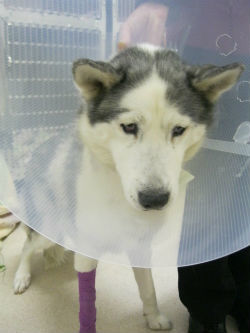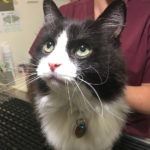“What is it?” is one of the common questions vets are asked when seeing a pet with a lump. This is a very good question but one that cannot always be answered without performing some tests. Lumps occur in all shapes and sizes and in all locations ranging from the skin, mouth, toes and eyelids. The first step is for the vet to examine the lump thoroughly, then we will often, with the patient gently held, take a small sample from the lump using a fine needle and examine it under the microscope. This will help rule out different types of lumps such as infection, a fatty lump or cyst, or a solid growth or mass. When a solid mass is suspected we recommend a biopsy be performed and sent away for analysis by a veterinary pathologist. This is the only way to have a 100% diagnosis made. Many lumps, even if cancerous or malignant, can be surgically removed and cured, whatever the age of your pet. Cancerous lumps may also be removed to prevent bleeding or ulceration and keep the pet pain free rather than as a curative treatment. Hence with any lump it is best to have it seen as soon as possible as even harmless looking lumps can turn out to be serious and of course small lumps are much easier to remove than large ones. Check your dog and cat regularly for any unusual lumps and bumps and if concerned see your vet. This is Sage the lovely 13 yo old Husky who had a mammary lump removed at our clinic recently.
Subscribe To Our Newsletter
Join our mailing list to receive the latest news and updates from our team.



